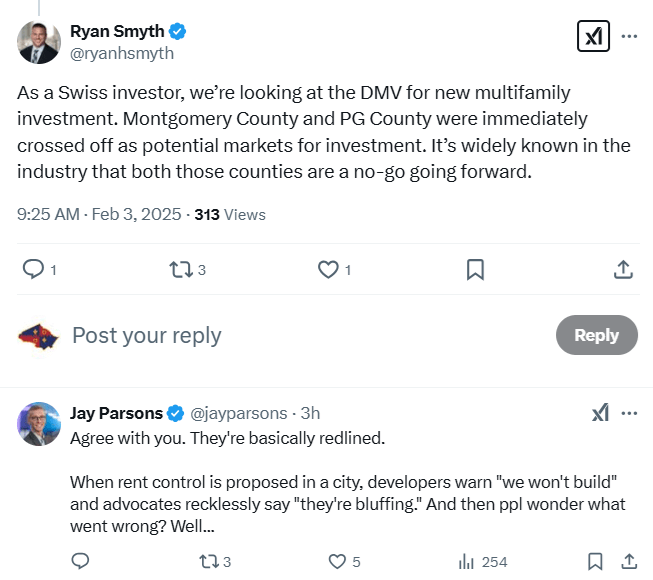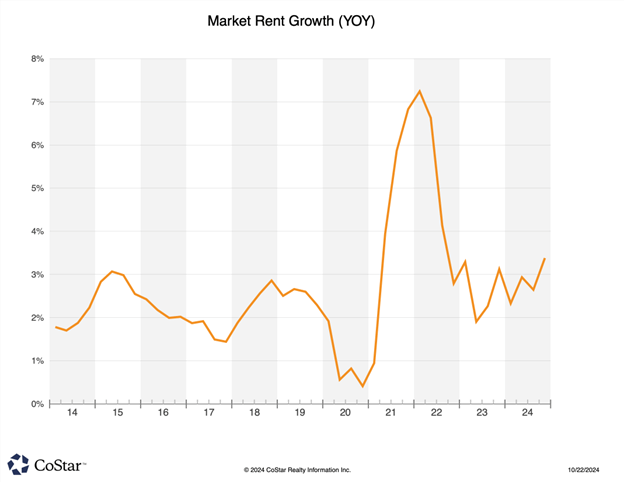Government Intervention has Increased Housing Costs for Renters
Part 2 of AOBA’s six-part series examining the state of rental housing in Suburban Maryland. Click here for part 1, which assesses the escalating costs of providing rental housing.
Rent regulation policies in Montgomery and Prince George’s Counties were billed by advocates as the answer to our housing affordability challenges. But in the short amount of time since they were adopted, they’ve already produced disastrous results.


Media outlets have highlighted the sharp drop-off both Counties have seen in new housing investment after adopting rent control. This is a direct hit to our housing production goals.
But even for existing rental communities, these policies have had the opposite of their intended effect and have actually increased housing costs for renters in Suburban Maryland.

The pandemic introduced significant volatility into the local economy. However, even as inflation soared and the cost of groceries and other consumer items increased by as much as 40-50%, market rents grew by approximately 7%—less than the rate of inflation, which peaked at 9%.
Lost in the political debate over rent regulations in Montgomery and Prince George’s County was the fact that the market had already self-corrected and returned to its pre-pandemic trend line, averaging a modest 2-3% year-over-year increase. And yet, the truly fascinating aspect of this chart is that rent increases have actually risen in response to the implementation of rent regulations.
Why is this the case? Well, it's all about incentives and risk management. Given current trends, operating costs will eventually increase by an amount greater than the artificially established rent cap. This incentivizes housing providers to take the maximum allowable rent increase in order to help cover unexpected spikes in expenses in future years. In this way, rent regulations often set the floor for rent increases rather than the ceiling as intended.
All of this flies in the face of the broader housing goals embraced by our community and contributes to an untenable situation for local housing providers and renters alike.
